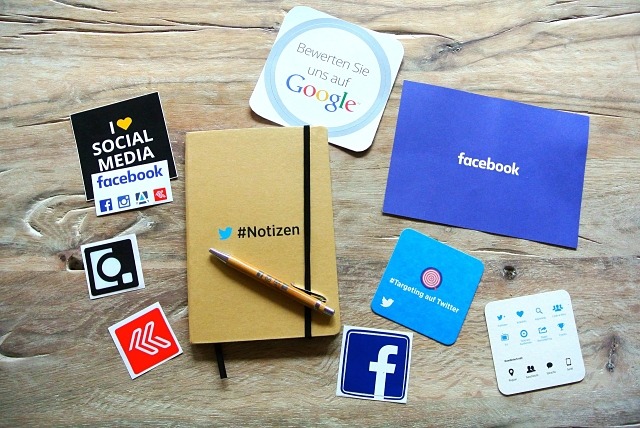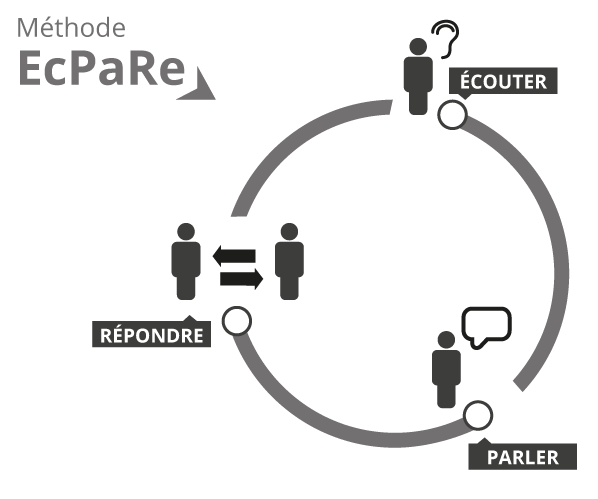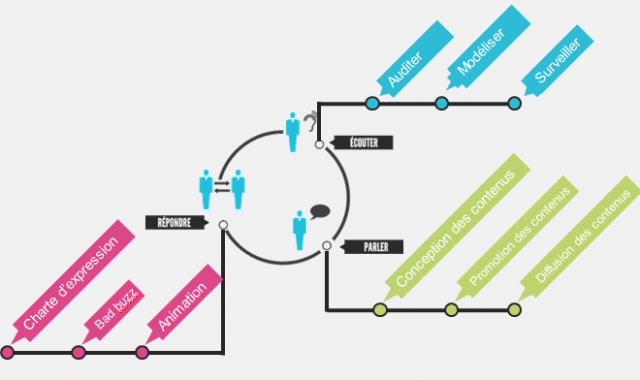
Community management is about building relationships and opportunities for your brand to interact with your current customers and other target audiences.
People talk online about your brand, about your company, and about YOU. Whether we want it or not, there is a lot of User Generated Content about any company or organisation.
Hence, your presence on the web results from the content created by all web users: what you say about yourself, and what others say about you.
Community management is a combination of methodology, resources and competences aimed at developing your presence and protecting your reputation on social media.
Six Reasons for being Social
 What do you risk by not being on social media?
What do you risk by not being on social media?
1. Competitors may overtake you
2. Your company or brand may face a reputation/communication crisis
3. Sale targets may be missed
4. You may not hear your clients
5. It will be difficult to monitor your clients and the market
6. And finally, your website referencing will not be optimized (SEO)
Listen, Speak, Answer: the EcPaRe method
First of all, your two main objectives on the web are:
- Traffic (attracting visitors)
- Conversion (converting visitors)
'Listen-Speak-Answer' are the three key steps to achieve these objectives through successful community management.

Indeed, the EcPaRe method (the French abbreviation for Listen, Speak and Answer) will help you to anticipate and respond appropriately to all comments that may damage a company's image. How?
Écouter (Listen): implementing a monitoring strategy to capitalise on user experiences, conversations, and feedback (KPI analysis).
Parler (Speak): implementing an editorial strategy, with content creation and promotion on social networks.
Répondre (Answer): developing brand awareness by engaging, animating, and integrating a community on forums or online groups.

Monitoring conversations that relate to you and your brand
How can you make the right decisions for your online development? How can you measure the way your brand is perceived?

Indicators will allow you to measure the effectiveness of your online presence. For instance, a KPI evaluates the performance of your company or your brand on the web.
For example:
- Your position on Google
- The number of sites linking to yours
- Your social media community
- Visitors
- Subscribers (such as newsletters)
Statistics tools will allow you to measure your audience, the traffic to your website, and the effectiveness of your digital marketing strategy.
Some examples include:
Tracking tools will allow you to know what people say about you. You can search by keyword, or by analysing how traffic changes when making offers to the public, or tracking changes when you develop your communication or digital strategy.
Some examples of search engines used in this area are:
Engaging with customers, prospects, and influencers

Different kinds of users populate the web. There are those who:
• search,
• participate,
• or surf
These people belong to different communities, such as:
• the Influencer community
• the Sharing community
• the Collaborative community.
Therefore, it is key for your company or brand to understand your audience, to adapt your strategy, and target your communication towards these different communities.
Influencer community – The influencer community listens, votes and recommends, which is why the Community Manager has to improve your positioning and increase your visibility here.
How?
- Creating a blog / microblog campaign
- Adding highly relevant content to your website
- Generating 'buzz'
- Conceiving sponsored events.
Sharing community – The sharing community filters, directs and recommends information. Consequently, your Community Manager has to listen to them, correct them and provide an appropriate message to improve the brand's image and reputation.
How?
- Setting-up monitoring tools
- Managing comments
- Being present on existing platforms.
Collaborative community – The collaborative community creates content, and contributes and participates heavily on online discussions. Therefore, the Community Manager has to animate it, give it legitimacy and reward it by creating a participative community around the brand, the company or one of the products. Furthermore, he or she will need to retain and develop the community's contribution.
How?
- Participating in discussions on the forums
- Emphasising the company's presence on wiki websites, Facebook groups, participatory blogs, and private platforms.
…and how to deal with bad buzz?
 Managing communities and conversations can be challenging, especially when it comes to negative and critical comments. Avoiding some instinctive reactions though can help you to manage troublesome situations.
Managing communities and conversations can be challenging, especially when it comes to negative and critical comments. Avoiding some instinctive reactions though can help you to manage troublesome situations.
Seven mistakes people make while dealing with bad buzz are:
- Reacting too fast
- Not reacting at all
- Thinking there will be no repercussions
- Provoking the Streisand effect
- Hiding yourself
- Being aggressive
- Thinking it is a catastrophe rather than an opportunity.
Sources:
"La Méthode EcPaRe": http://www.ecpare.fr/
"Les clés pour devenir Community Manager": https://openclassrooms.com/fr/courses/2035371-les-cles-pour-devenir-community-manager
Photos:
Photo by rawpixel.com from Pexels: https://www.pexels.com/photo/two-man-and-two-woman-standing-on-green-grass-field-1162964/
Photo by yourschantz from Pixabay: https://pixabay.com/en/socialmedia-facebook-twitter-952091/
Photos by Tamento from La Méthod EcPaRe: http://www.ecpare.fr/
Photo by rawpixel.com from Pexels https://www.pexels.com/photo/macbook-pro-908284/
Photo by Wokandapix from Pixabay: https://www.pexels.com/photo/abstract-board-game-bundle-business-267355/
Photo by Jan Prokes from Pexels: https://www.pexels.com/photo/angry-bad-john-art-black-and-white-emotion-709732/











